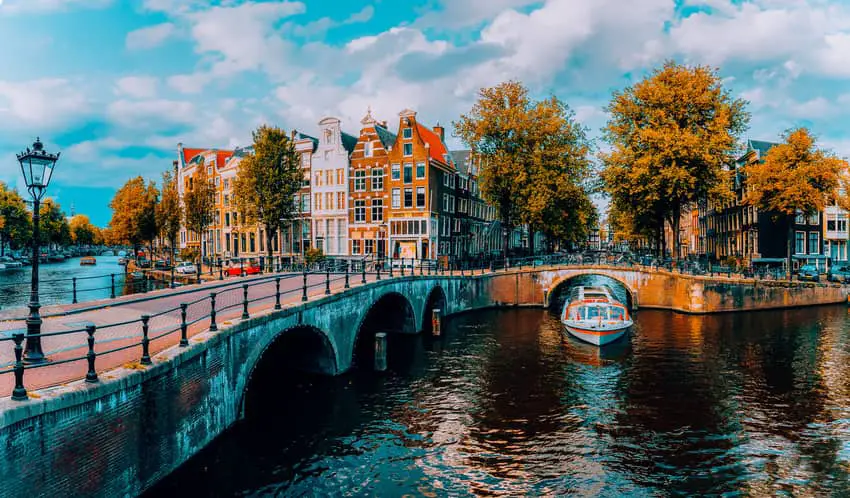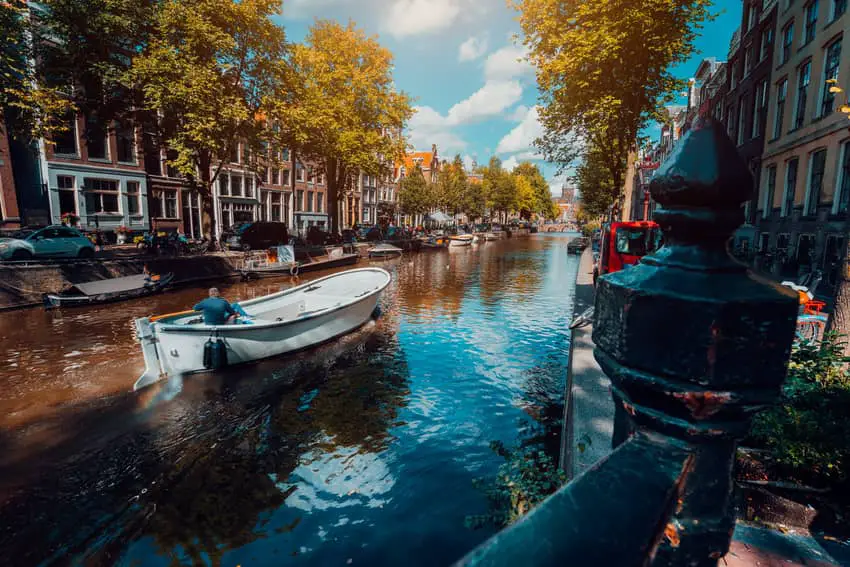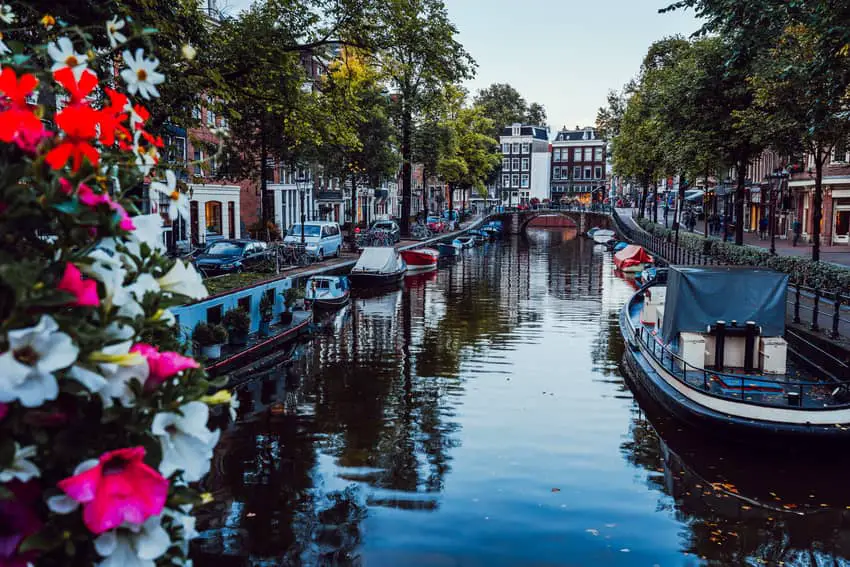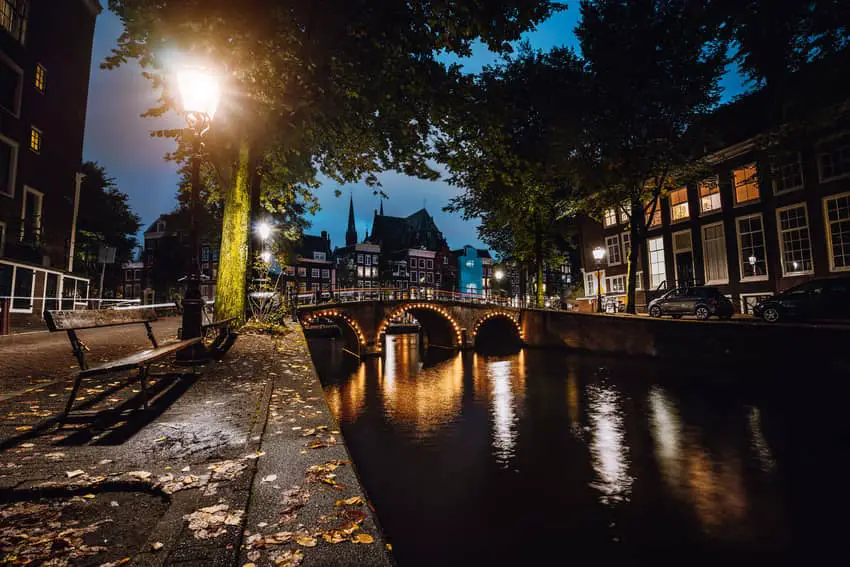One of the most characteristic things in the whole Netherlands is the amazing and numerous canals one can find everywhere. These canals unlike in other countries, are always completely full and are used as the number one way of transportation of almost anything in the whole country, including Amsterdam and have been recognized by UNESCO as a world heritage. But, where does the water come from? Is it drinkable? Do they use it?
The canals in Amsterdam have freshwater but also saltwater. The water of the canals comes from different sources: One of the main ones is the Amstel river and other affluent. Another one is the sea, connected by the Ijmuiden. And also the rain that contributes to the canal flow.

The freshwater comes from the river Rhine, which is originated in Germany and has its delta on the Dutch coast. All its affluents like the river Amstel are connected and they also receive a lot of freshwaters from the rain, something very abundant in both countries as it is popularly known.
What type of water is in the Amsterdam Canals?
The canals in Amsterdam are one of the main features of the city for both tourists and locals. For the first group, because it is a peculiarity hard to find anywhere else in the world and because it is impressive how well-connected everything is and how much water influences the life of the Dutch citizens. On the other hand, for the second group, Dutch society has been shaped because and thanks to their relationship with water, something they have been working on for centuries.

Amsterdam is one of the Dutch cities with the highest number of canals because it was one of the main merchant points in the whole country and rich merchants were living there and wanted to have their houses and business connected to the whole world. (If you want to know more about this, check out the latest article I have written about the History and Origin of Amsterdam)
In general, water is one of the main features of the Dutch culture and it is important to know more about it, therefore: is the water in the canals in Amsterdam freshwater?
Well, the answer is yes and no. There are both freshwater and salty water in the canals. This water is filtered and treated in the specific purification plant and it is the same water we all get when we open the tap. It is 100% drinkable water and one of the best ones you will ever drink in your life due to the very low amount of chemical products, lime and other elements that modify the taste of water. Basically, you will end up drinking odorless and colourless water, pure water.

A lot of companies such as SPA, producers of bottled up water in the Netherlands, have publicly admitted using tap water or at least a high percentage for their final product, which means that buying water bottle equals us filling up a bottle under the tap to drink. This is one of the biggest advantages of living in the Netherlands and definitely a highlight to live in a big city like Amsterdam and to be able to do that and stop buying plastic and contaminating the planet.
What is the origin of water supplies in the Netherlands?
Well, the canals are almost full all year round, which also means that there are many sources that provide water throughout the different seasons.
- Rain
- Rivers and affluents
- Sea
Winter and Autumn’s rains are one of the main sources of water for the canals in Amsterdam. The colder months have higher rains than the rest of the year, which means even more water than normal. This is one of the main water sources for the flow of the canals. This water is, therefore, freshwater being added to the canals. Another source of water that fills the canals in the capital is the river Rijn (Rhine) and its affluents like the Amstel.

Most people may think that actual rain is the main freshwater source in the Netherlands, but technically are rivers and canals the main one. There aren’t many actually water towels in use, so there is not much water that is reserved when it rains like in other countries. However, this water goes directly to the river and canals, which also get their flow from their source and that is the one taken for human consumption, tap water for home and irrigation, etc.
As I mentioned before, there is also contact with salty water coming from the Northern Sea, connected by the so-called Noordzeekanaal (Canals of the Northern Sea). The port of Amsterdam connects to the coast of Amsterdam and has completely open estuary where both salty and sweet water mixes up. The Ijmuiden and the Ij river is the main feature where one can see the ships and the water connecting the entrance to the sea and the entrance to the water and canals. It is also one of the main entrance for the world-wide famous ship parade, also called Sail Amsterdam.
To Sum Up, YES! There is freshwater in the canals but it is not the only type of water, which means it is not completely ready for human consumption. However, it is good quality water, easy to clean and ready to distribute for drinking and everyday use.
Curiosities About Amsterdam Water
As pure and odorless as Dutch tap water is, the water in the canals is not drinkable. The canals are constantly being used for ships and other engine-powered transportations that as clean as they can be they still contaminate the water. Besides, some animals like birds, swans, seagulls and so on defecate and use those waters for their personal use, which would be more than enough reason not to consume the water. Moreover, thousands of bikes end up in the canals every year, which I don’t think it is a good thing to add to drinkable water ;P

Dutch people tend to swim in the canals. Even though I have never seen anyone swimming in the middle of the Canal Ring in Amsterdam, by the Ij river and in certain areas in the Southern part of the city, as they do in other Dutch cities, they swim. It is a popular activity to swim in the rivers and canals in the Netherlands, something I personally consider disgusting but a safe practice that if you are as brave as Dutch people, you may want to consider it.
The same thing happens in winter, even though people don’t actually swim but ice skate in the frozen canals. This doesn’t happen every winter. I was lucky enough to live it two years ago when the canals in the WHOLE NETHERLANDS got deeply frozen for a couple of days and Dutch could use them as ice rinks. If you want to know more about the canals, click here to read more about it.
What else should I know about the water in Amsterdam?
- Tap Water is Drinkable: Once again, it is important to know that you can drink tap water but it is water that has gone through a process of purification. However, it is good water and it is the most common thing to consume it, unlike other European cities’ tap water. For those with more sensitive health, newborns and so on, it is fine but maybe better to ask a paediatrician or buy bottle up water.
- Bottled up Water: Water costs just as much as any other drink in the Netherlands. This is because the Government is encouraging people to drink tap water and refill bottles as a way to contribute to the environment and use less plastic. This means that you will get free tap water if you ask for it at a restaurant, but a water bottle will be rather expensive.
- Free Water: You will be offered water with your coffee in certain places, you will be able to refill your bottle if you ask for it or even going to the bathroom, that is just fine.
- Canals in the Netherlands are connected: as I was explaining before, the canals were created in order to be able to transport goods and connect the centre of Europe with the Northern Sea. This is why Amsterdam has so many canals and all the main and most wealthy areas are well-connected to other canals, other rivers and the sea, of course. This is also what influences all the mix of water types and what makes water the best transportation.
- Living in the Water: another surprising characteristic of Amsterdam are the many houseboats located all over the canals and rivers in the city. It is not the most common thing and it sparks the interests of tourists. It is rather expensive to live in the water and there are other issues such as the water connection to the canal, the wastewater and so on. This makes water not appropriate for human consumption.